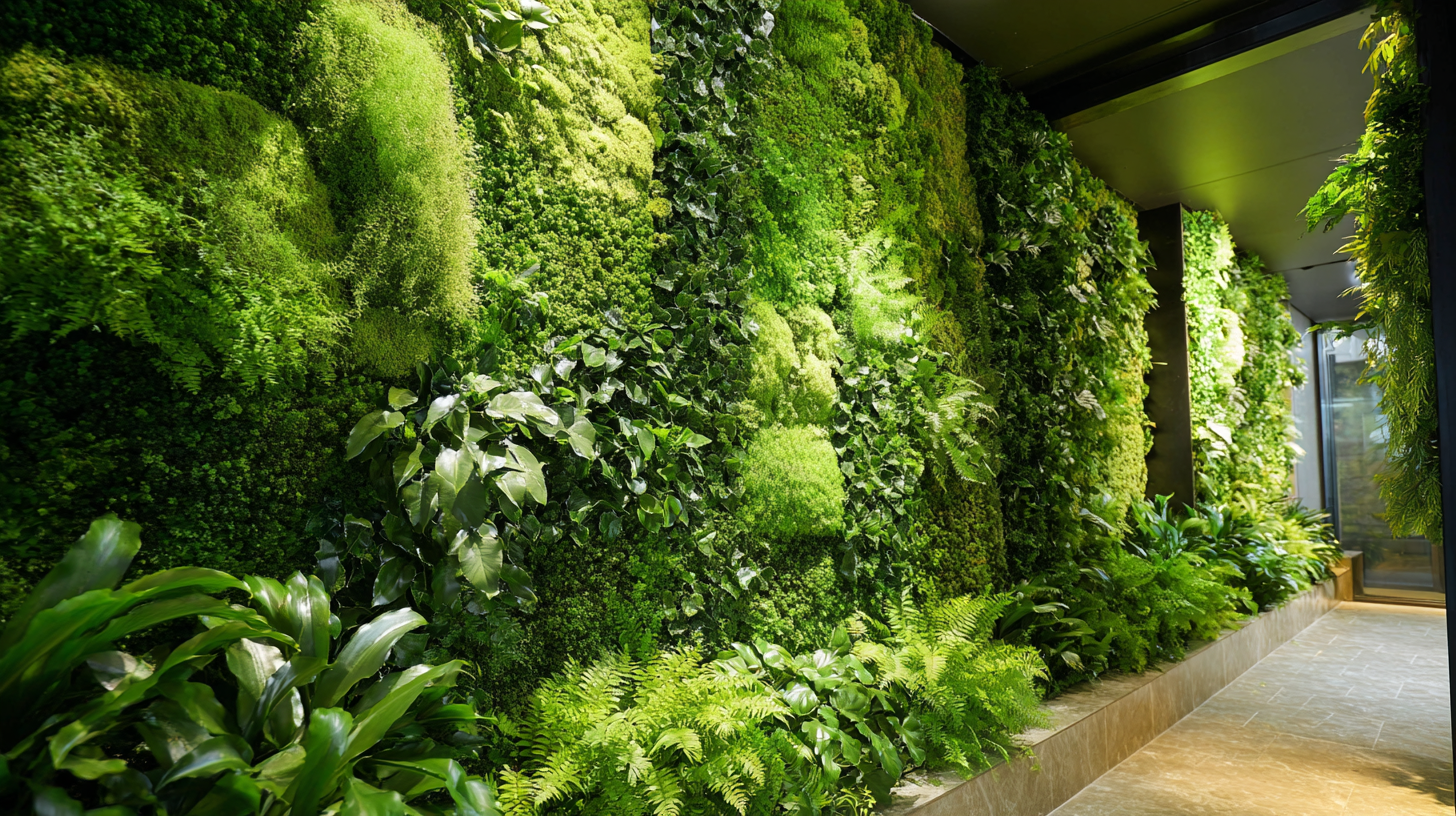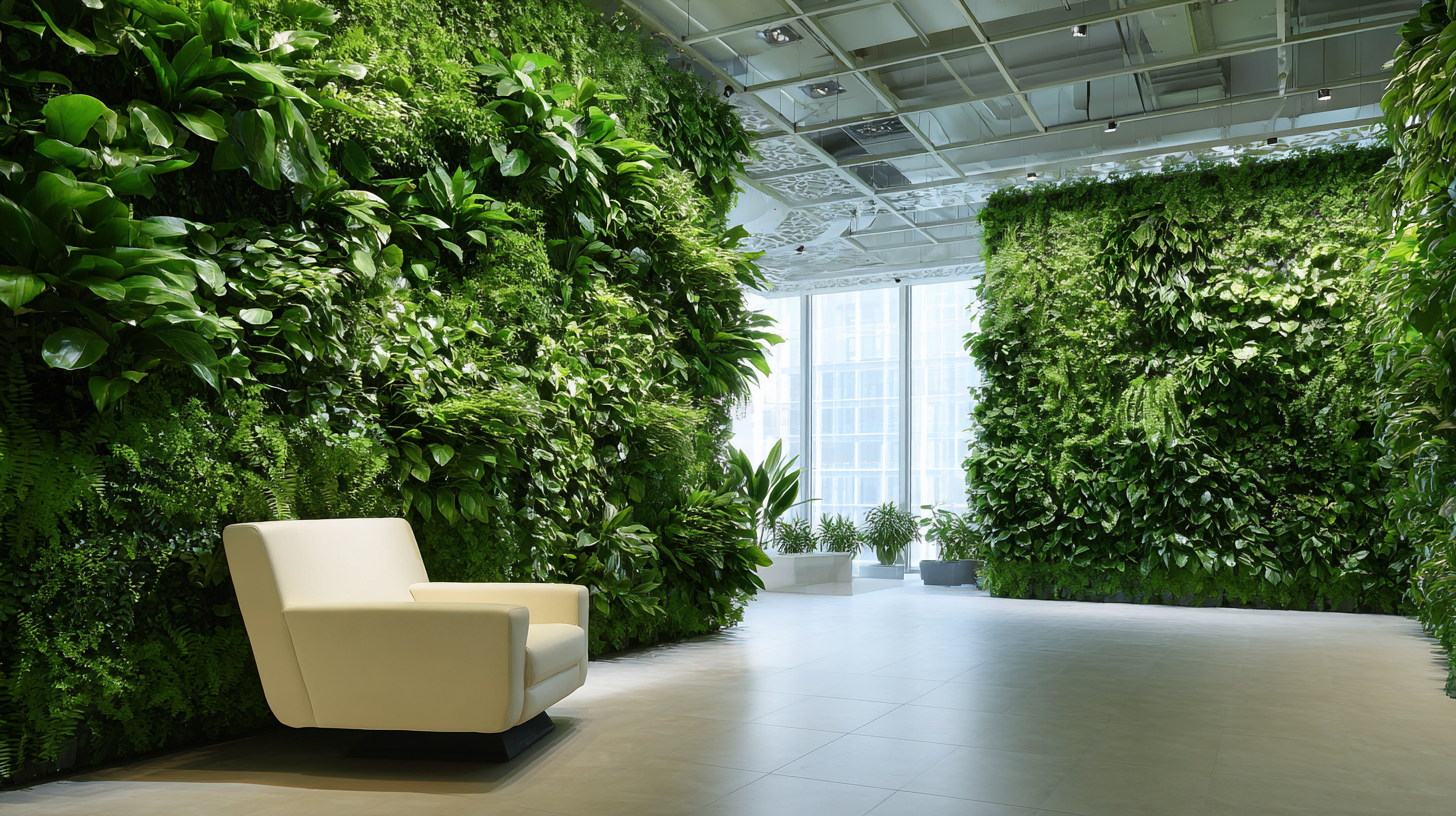Artificial Green Walls have emerged as a transformative solution for enhancing indoor environments, significantly impacting both air quality and aesthetic appeal. According to a study by the World Health Organization, indoor air pollution is responsible for approximately 4.3 million premature deaths annually, highlighting a pressing need for effective air purification solutions. Research indicates that introducing biophilic design elements, such as Artificial Green Walls, can reduce indoor pollutants by up to 60%, as they serve as living filters that absorb harmful particulates and improve overall air quality. Furthermore, a report from the University of Queensland found that incorporating greenery into indoor spaces can lead to a 15-20% increase in employee productivity and well-being. By promoting a healthier indoor atmosphere and creating visually pleasing environments, Artificial Green Walls not only foster well-being but also contribute to sustainable architectural practices, making them an essential element in modern urban design.

Artificial green walls have gained significant attention for their potential to enhance indoor air quality. Research indicates that living walls can improve indoor environments by filtering pollutants and increasing humidity levels. According to a study by the University of Technology in Sydney, spaces with artificial green walls can reduce airborne particulate matter by up to 60%. This is critical in urban settings, where air quality can be significantly compromised due to pollution. Additionally, these walls can also mitigate volatile organic compounds (VOCs) commonly found in office environments, contributing to a healthier workplace.
Incorporating artificial green walls not only benefits air quality but also enriches aesthetic appeal. They provide a vibrant, nature-inspired environment that can boost productivity and well-being among occupants. A report by the World Green Building Council notes that offices with biophilic designs can see a reduction in stress by 15% and an increase in creativity by 20%. This dual benefit makes artificial green walls an appealing option for businesses looking to improve both health and aesthetics in their workspaces.
Tips: Consider selecting plant varieties that are known for their superior air-purifying qualities, such as the Snake Plant or Spider Plant. Additionally, regular maintenance is crucial; ensure that the wall is cleaned and assessed for plant health at least monthly to maximize benefits.
Artificial green walls offer a stunning enhancement to workspace aesthetics, transforming mundane office environments into vibrant, energizing spaces. These installations mimic the beauty of natural greenery without the maintenance challenges associated with live plants. By incorporating lush greenery into the design, businesses can create a visually appealing atmosphere that sparks creativity and reduces stress, ultimately boosting employee morale and productivity.
Moreover, artificial green walls contribute significantly to the overall ambiance of the workspace. They serve as striking focal points, creating a sense of tranquility and a connection to nature amidst the hustle and bustle of daily work life. The versatility of design options allows for customization to suit any office theme, from modern minimalist to cozy and welcoming. This adaptability makes artificial green walls a smart choice for businesses looking to enhance their interior design while reaping the benefits of improved air quality and a more inviting work environment.

Artificial green walls and traditional plants each have unique advantages when it comes to enhancing indoor air quality and aesthetics. While traditional plants offer natural air purification through photosynthesis and the absorption of pollutants, artificial green walls provide a consistent and maintenance-free solution that can also improve air quality. These walls are designed with materials that can capture and filter airborne contaminants effectively, making them a practical choice for environments where real plants may struggle to thrive.
In terms of aesthetics, artificial green walls present a clean and modern look that can be tailored to fit various interior designs. They do not require sunlight or specific environmental conditions, allowing them to be installed in areas that might not be suitable for living plants. In contrast, traditional plants can add a touch of natural beauty and charm, with diverse species contributing different colors and textures. However, they demand more care and attention, which can be a disadvantage in commercial spaces with limited maintenance resources. Ultimately, the choice between artificial green walls and traditional plants hinges on the specific needs for air purification and the desired visual impact within a space.
| Criteria | Artificial Green Walls | Traditional Plants |
|---|---|---|
| Air Purification Efficiency | High | Moderate |
| Maintenance Requirements | Low | High |
| Longevity | 10+ years | 1-5 years |
| Aesthetic Appeal | Customizable Designs | Natural Look |
| Allergen Reduction | Yes | Variable |
Artificial green walls are not only visually appealing but also significantly enhance indoor air quality and employee productivity. Research shows that workplaces featuring green walls can improve employee well-being by up to 47%, largely due to the reduction of indoor air pollutants and increased humidity levels that contribute to a healthier environment. A study published in the Journal of Environmental Psychology found that employees in environments with indoor plants report a 15% higher satisfaction level, which directly correlates with improvements in productivity.

Integrating green walls into office spaces can lead to a measurable boost in morale and efficiency. According to a report from the World Green Building Council, green office spaces can result in up to a 6% increase in productivity. This is attributed to the calming nature of plants, which can reduce stress levels and enhance focus.
Tips for Implementing Green Walls:
Artificial green walls, also known as vertical gardens, have gained popularity not only for their aesthetic appeal but also for the innovative materials used in their design, which contribute significantly to environmental benefits. According to a report by the World Health Organization, indoor air pollution is a pressing concern, as it can lead to various health issues. Artificial green walls help improve indoor air quality by utilizing materials that can absorb and filter pollutants. For instance, studies have shown that materials like polyethylene and integrated irrigation systems can enhance moisture control and air purification, effectively reducing airborne particulates by up to 30%.
Moreover, many manufacturers are now using recycled and sustainable materials in their artificial green wall designs, further minimizing their environmental footprint. A research study from the Green Building Council indicates that these walls can reduce energy consumption by up to 20% by providing insulation and temperature regulation. By incorporating such innovative materials, artificial green walls not only beautify spaces but also promote ecological responsibility, making them a smart choice for modern architecture and interior design. The combination of aesthetic enhancement and performance efficacy makes artificial green walls an appealing solution for sustainable living and working environments.
This chart illustrates the impact of artificial green walls on various aspects of indoor environments, highlighting improvements in air quality, aesthetics, and overall wellbeing.
